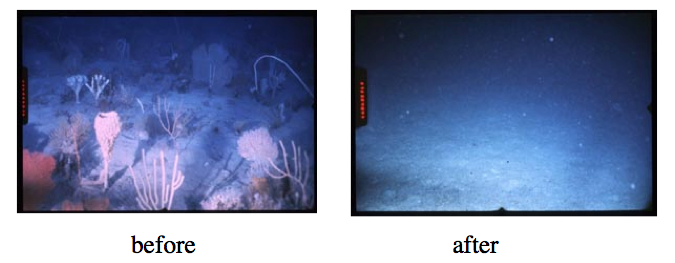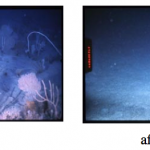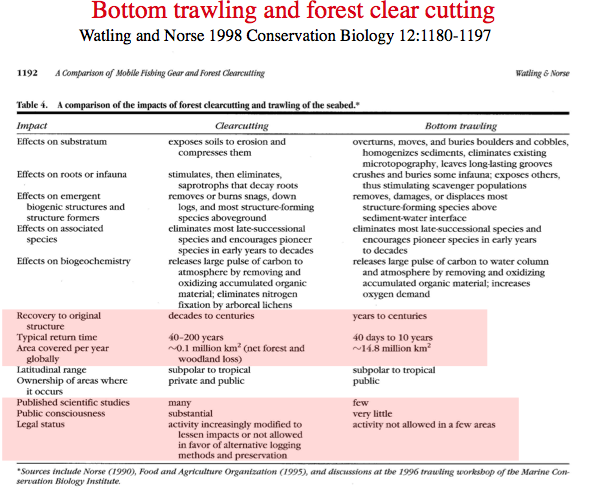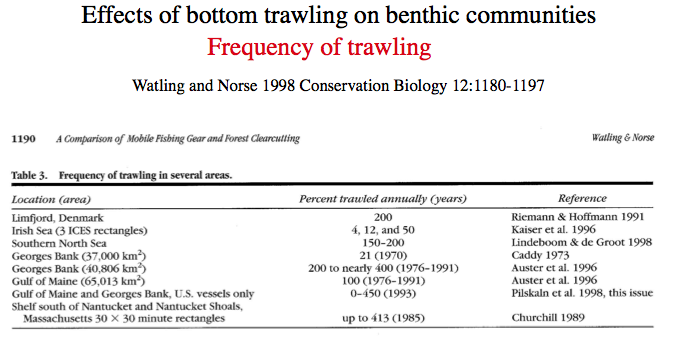 The editorial below is from the NYTand references a new study in Nature (Puig et al 2012). As described by Lucas Laursen:
The editorial below is from the NYTand references a new study in Nature (Puig et al 2012). As described by Lucas Laursen:
Deep-sea trawling smoothes out the wrinkles of canyons on the continental slope, making marine mountainsides look more like ploughed fields, changing the habitat of deep-sea creatures…For almost a century, fishing fleets have trawled for shrimp off Spain’s Mediterranean coast by dragging nets along the flat, shallow coastal sea floor. But in the 1960s, they also started to pursue shrimp farther offshore and into rugged canyons as deep as 800 metres. The impact they had on this rougher terrain was a mystery.
The new paper indicates that as in so many other places, bottom trawling is flattening the seafloor and destroying essential fish habitat but surprisingly is also increasing sediment flowing into deep sea canyons.
I just lectured about bottom trawling in my marine ecology class yesterday as part of a broader lecture about the many indirect effects of overfishing. Some of the graphics from the lecture are below:
NYT editorial: It is hard to grasp just how industrialized commercial fishing has become. You may know about the problems inherent in fish farming. You may have read some of the stunning accounts of work aboard the factory ships that catch, process and freeze fish. But there is no better way to grasp the scale of industrial fishing than to consider the impact of bottom trawling.
According to a new study published in Nature, trawlers are doing more than catching fish. Because they drag huge, heavy nets across the ocean floor, they are reshaping the bottom contours of the busiest fishing grounds. It is the equivalent of plowing a cornfield, with this difference: a farmer plows his own field once a year, but trawlers cover “the same grounds year round on a daily basis.” By disturbing sediment, they are, in essence, smoothing out the sea bottom and reducing its value as habitat. This is occurring, the authors say, not just on relatively shallow continental shelves, but on continental slopes as well.
Heavy trawling takes place all around the world, including off the coasts of the United States. In the scientists’ study area — the Mediterranean Sea near Spain — bathymetric mapping shows the smoothing caused by the steady sifting of sediment, and underwater photographs clearly depict trawler drag marks. In fact, trawlers are shifting as much sediment as naturally occurring underwater landslides. Trawlers working on continental slopes alone cover about half the area of the United States. Globally, trawlers working on all continental shelves and seamounts cover about five times that area.
These estimates are conservative. As the authors note, the regulations governing deep-sea bottom trawling are very weak, and there is a great deal of illegal and underreported fishing going on. Marine life flourishes in complexity, which bottom trawling destroys. It will take strong international regulation, a reduction in European fishing subsidies and heightened consumer awareness in order to limit, if not halt, this disastrous scraping of the seafloor. From here.



Leave a Reply